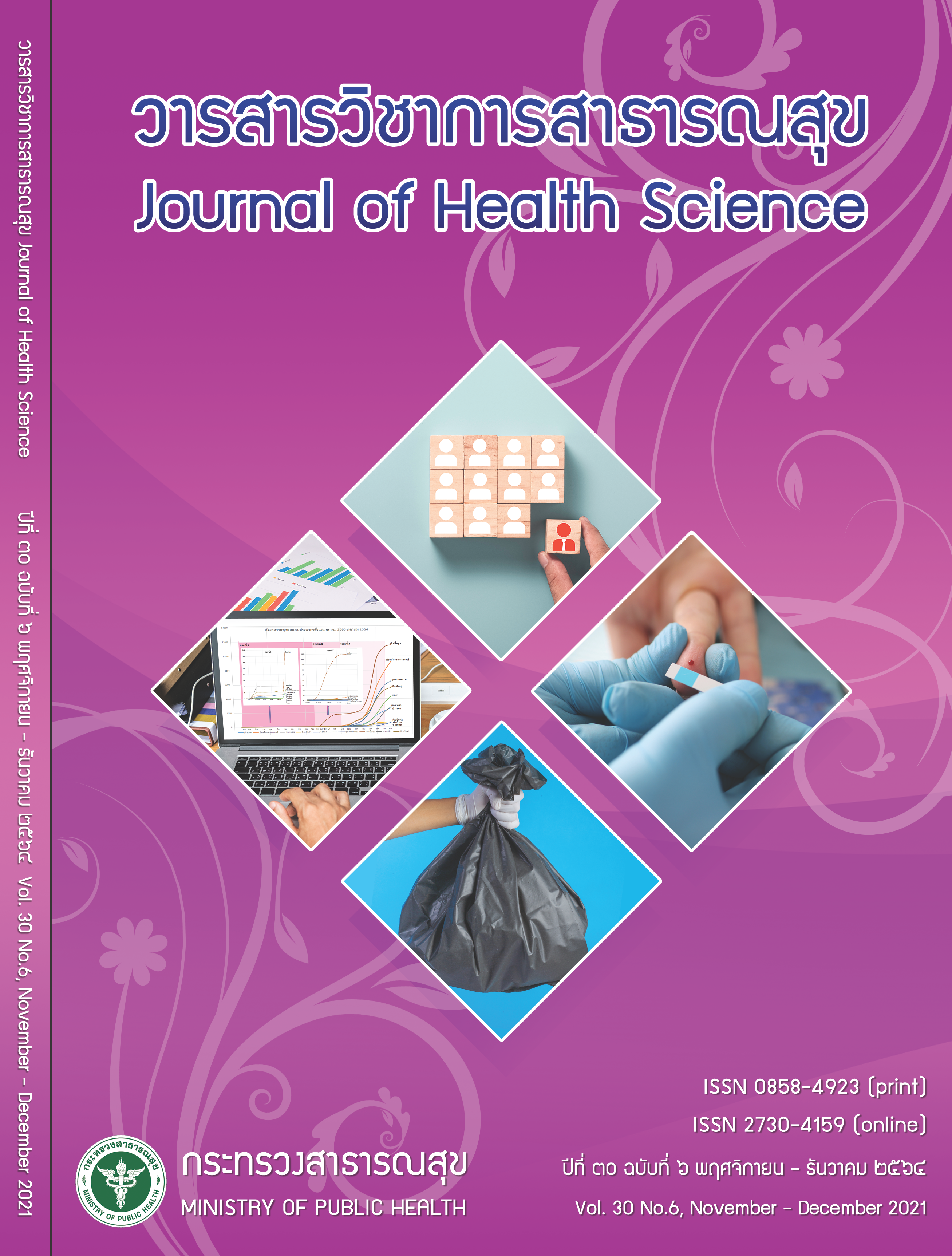Health Risk Assessment and Environmental Risk Assessment in Thailand Border Checkpoint Area
Keywords:
health risk assessment, environmental risk assessment, Thailand border checkpoint areaAbstract
This research aimed to assess health risk and environmental risk in the areas along the border at Klongluek Checkpoint, Aranyaprathet District Srakaew Province and Chiang Khong Check-point, Chiang Khong District, Chiangrai Province; with an intention to provides recommendations on the prevention and resolution of such risks. In the study process, a qualitative research methodology was applied and water samples were collected for laboratory investigation. The research found that the water quality in Klongluek area was classified as surface water source type 3, which could be used in the consumption through normal sterilized process and through the improvement of water quality to be used in agriculture. However, it could not be used to conserve aquatic animals, fisheries, swimming and water sports or activities which indicated unclean source of water. The organic matter, biochemical oxygen demand (BOD) content was higher than the standard of the total surface of water which showed highly polluted organic matter. For the Chiang Khong area, the normal quality of water was observed. However, there were health risks associated with communicable diseases, theft, community conflict, narcotics and human trafficking. Environmental risks included waste, dust, toxic fumes and wastewater. For recommendations included the separation of border checkpoints for people and goods; the ungent central-level management of waste and wastewater due to limited potential of the local authoritiess; and stronger law enforcement than non-border areas. Collaborate with bordering country should be promoted in order to reduce crime, robbery, narcotics and human trafficking. A campaign to educate people to cultivate values for health and the environment should be held regularly. In addition, arrangement of appropriate housing for foreigners to maintain hygiene and environment as well as to design a new market/business space to maintain a healthy and environment friendly should be organized.
Downloads
Downloads
Published
How to Cite
Issue
Section
License

This work is licensed under a Creative Commons Attribution-NonCommercial-NoDerivatives 4.0 International License.







